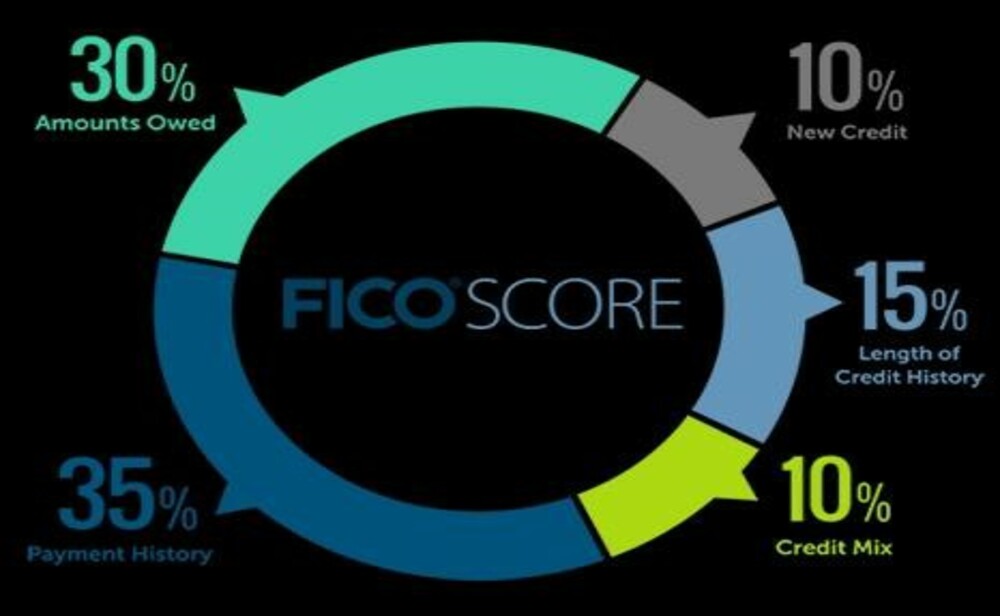The Worst Credit Cards — Cards You Should Avoid
These are my criteria for credit cards that we would recommend to others. This list is focused on zero-interest cards that offer significant rewards to customers that pay the balance in full every month. Any reward card has a minimum spend requirement of $1,500 or more to earn the bonus. So, these cards tend to require high credit scores, high incomes, and decent payment history. The more time you spend reviewing your credit card offers the better you will become at identifying the cards that are right for you. You should review your credit card offers every month. Here are the top credit cards to avoid, along with our comments:

Worst Credit Cards to Avoid in 2022
Disclaimer: This is not an all-inclusive list, and we do not consider fees or points important. Your mileage may vary, and you may still prefer one of these cards based on what is important to you. The list is also not complete. We expect to release our next list later this year.
Card #1: Chase Freedom
Chase Freedom is the credit card offered with the lowest annual percentage rate (APR) on a balance transfer: 15.99% (though 15.49% after bonus). This card also offers a 7,000-point bonus on a $2,500 balance transfer, the highest available credit card bonus. The annual fee is $95 and the balance transfer fee is 2.75%. The application and approval process can be lengthy, but it is not too difficult.
There are only two interest rate categories: 18% for purchases and 22.49% for balances. Because the balance transfer APRs are so low, you would be better off comparing the 3.99% and the 3.99.9% APRs to earn a little extra cash. It is important to make sure that the balance transfer APRs match the interest rate categories.
Card #2: US Bank Cash in Gold Visa
This card offers similar zero interest transfer bonuses but does not offer the same hefty balance transfer fee. It offers a much lower APR of 18.9% and no transfer fee. The fee on balance transfers is 3.75%, which is much lower than the 2.75% of Chase Freedom. The annual fee is $59, which is in line with the fees of Chase Freedom. The balance transfer fee is 3.75% and the application and approval process are somewhat lengthy.
This card is not worth considering for the long haul. You will get a few months of great interest on your purchase purchases, but once the promotional period is over, you’ll have to pay the balance in full. The interest will likely be higher than you’d like and the fee on balance transfers is high.
Card #3: Citi Simplicity
Citi Simplicity offers no balance transfer fee, but it is a higher APR card. The fee on balance transfers is 3.99%, which is a bit high. It also has a 3.99% APR for purchases, but the interest rate for purchases is not as high as the interest rate for balance transfers. Citi Simplicity is not good for balance transfers because you can do them and still earn rewards on purchases, which is what you should be focusing on. This card is meant to be used for small, one-time purchases.
The Citi Simplicity has the same great rewards rates as the Simplicity Card with the same transferable 0% interest rates. The Citi Simplicity is a great card to use for purchases because of the great 0% rate, but the transfer fee makes it a less desirable choice for balance transfers. If you need to transfer a balance, this is a great option, but if you are in the market for a balance transfer APR, it is important to focus on what will earn you rewards rather than what offers the lowest rate.
Card #4: Capital One Cashback Match
This card offers the same transferable 0% interest rate for balance transfers as Chase Freedom, but it has a much higher APR. It has a 22.49% interest rate on purchases and 18.9% interest rate on balances. This card also has a transferable 0% APR for balance transfers but there is a transfer fee of 3.75%. The annual fee is $59. There is also a 3.75% fee on transfers and the application and approval process is long. The APRs on purchases and balance transfers are similar and the balance transfer fee is higher.
The good thing is that the balance transfer fee is not a flat fee and you can choose which transfer fee you’d like to pay. The interest rate on purchases is quite a bit lower, but it has a much higher transfer fee. If you are going to be using this card for purchases, the transfers will be paid in full, so the balance transfer fee makes this card more difficult to justify.
Card #5: BankAmericard Cashback MasterCard
This card has a transferable 0% interest rate for balance transfers. It offers a 2.99% rate for purchases, but it has a 21.99% rate on transfers. The annual fee is $59, which is lower than most cards in the same range, but the transfer fee is very high. The point of balance transfers is to earn cashback and with a balance transfer fee of 3.75% there is no benefit. You should be focusing on what you are getting for free.
The transfer fee is high, but not out of line with most other cards. The 0% rate for balance transfers lasts for 18 months before the rates go back to their normal rates. It does not apply to balance transfers in the first 60 days, which is the exact time you’ll get the most benefit from a transfer.
Card #6: Capital One Premier Rewards Gold Card
This card is a great choice for people who are really close to the limit on their rewards credit cards and want to get additional rewards. It has no transfer fee and no balance transfer fee. It has the best APRs: 16.74% for purchases and 22.49% for balance transfers.
The fee on balance transfers is 3.5%, which is the highest of any of the cards listed here. It offers no sign-up bonus or reward points. This card can be good if you spend a lot on your credit cards and use your cashback rewards on purchases and gas, but you should avoid it if you’re a regular cashback user.
Card #7: Discover it® credit
Discover it is an excellent option if you have a ton of credit card rewards, don’t have too many purchases to make per month, and would like the best balance transfer APRs. The fee on balance transfers is 3.5%, which is the highest of the cards listed here. It also offers no sign-up bonus or reward points.
The balance transfer APRs are 21.74% for purchases and 22.49% for balances. However, the interest rate on purchases is 5.49%, which is much lower than the 3.75% interest rate that applies to balances. The annual fee is $49.99 and the balance transfer fee is 3.75%. You can take advantage of a 0% introductory APR on balance transfers until September 27, 2018. This offer may not be for long.
Card #8: MBNA Cash Back Plus
MBNA Cash Back Plus has a lower promotional APR of 9.99% and a 3.99% balance transfer fee. Unlike other cards on this list, it offers a 0% promotional APR for 18 months. It does not offer the balance transfer fee of other cards on this list. The annual fee is $29.99. The balance transfer fee is 3.99%. The average APR on the cards reviewed on this page is 20.08%. The other big difference between this card and the others on this list is that you can earn 3x cash back on purchases.
The standard cashback bonus is 1.5% of your purchases. This card earns 1.5% toward your purchases plus an extra 0.5% cashback for each purchase made with a linked credit card. This card is worth considering if you spend a lot on your credit card each month. You will have to pay the balance in full at the end of the promotional period, but once the promotional period is over, you’ll pay off the balance in full. The rewards earned on purchases are great.
Card #9: Discover it® Cashback Match
Discover it® Cashback Match is a better balance transfer card, and it offers no fee on balance transfers. It also has a higher APR of 21.9% and no balance transfer fee. The transfer fees are 0.15% and you pay 0.5% on new purchases.
This card is not great for balance transfers because you cannot earn any cashback with it. The interest rate on purchases is high. This card is also not good for purchases because it does not earn rewards on those.
Card #10: Chase Sapphire Preferred Card
The Chase Sapphire Preferred Card is not offered with a lower annual percentage rate (APR) than the Freedom card, but a good thing to consider when comparing them is that the Sapphire Preferred card offers three times the points per dollar spent on travel (6,000 points per $1,000 spent). Most people use rewards programs to earn cashback or airline miles, so this feature might be the thing that makes the difference. The annual fee is $95, and the balance transfer fee is 1.5%.
Card #11: Barclaycard Arrival Plus World Elite Mastercard
This credit card offers a lower interest rate than the Freedom card, a higher points-per-dollar-spent bonus, and a sign-up bonus of 60,000 points after spending $3,000 in the first three months. The annual fee is $95 and the balance transfer fee is 2.50%.
The transfer bonus is 15% points on all purchases and cashback on $3,000 in purchases. For example, if you spend $3,000 on this card, you would earn 15,000 points or $200. The card also offers 5% back on all purchases made through Masterpass. The agreement page for the Barclaycard Arrival Plus World Elite Mastercard says that the terms are subject to change. A reminder to check these terms before signing up.
Card #12: Capital One Venture Rewards Card
With a 20% bonus on cashback on all purchases, this credit card offers the highest cashback of any cashback credit card. You also earn 5% back at restaurants and gas stations and 3% at grocery stores, drug stores, and online retailers. The annual fee is $99, and the balance transfer fee is 1.5%.
If you combine the points from the Venture Rewards card with the Capital One Cashback Match, you could earn more than $300 in cashback from qualifying purchases. This is a great choice if you spend a lot on groceries.
Card #13: Chase Freedom with getting Started Bonus (formerly Points + Cashback Bonus)
The Points + Cashback Bonus card offers 0% APR for 15 months on all purchases, and the conversion bonus is 10,000 bonus points after spending $3,000 on the card in the first 90 days. If you spend $5,000 on this card in the first 90 days, you will earn a $1,000 cash bonus.
If you are a new cardholder, there is a one-time $99 fee, and the balance transfer fee is 1.5%. This card is very competitive in terms of points-per-dollar-spent bonuses, but note that the application and approval process can take a while.
Wrapping – Up!
These are some of the bad credit cards in the list stated above. Choosing the right cashback credit card might make sense if you typically spend $5,000 or more per month, especially on gas, groceries, and restaurant meals. The best cash-back cards are generally offered with great bonuses and low or no APRs. If you are careful and compare all the options to make sure that you are getting the most points and cash back, you may be able to earn enough cashback to pay for your monthly auto insurance premiums. This might not be a choice you can live with for long, but it can make nice savings each month. There are plenty of options for earning cashback, miles, and rewards points without paying high-interest rates. Shop around, and you should find a cash-back credit card that works for you.
Must Read: Best Credit Cards of April 2022






